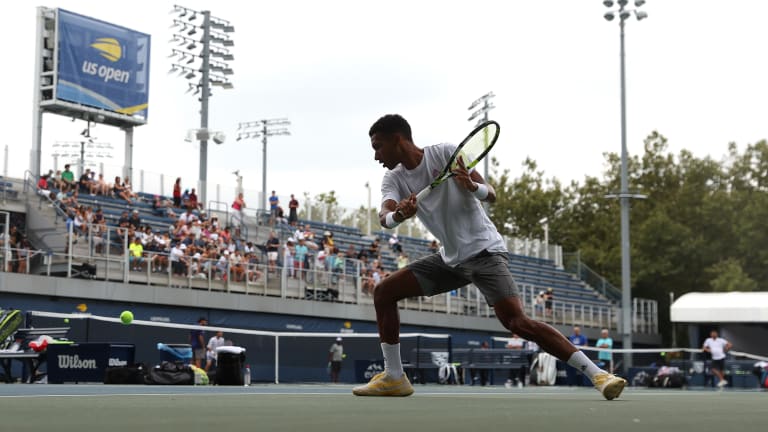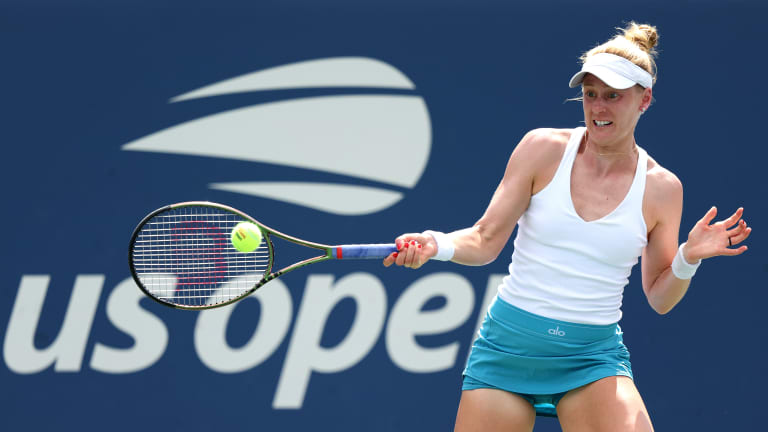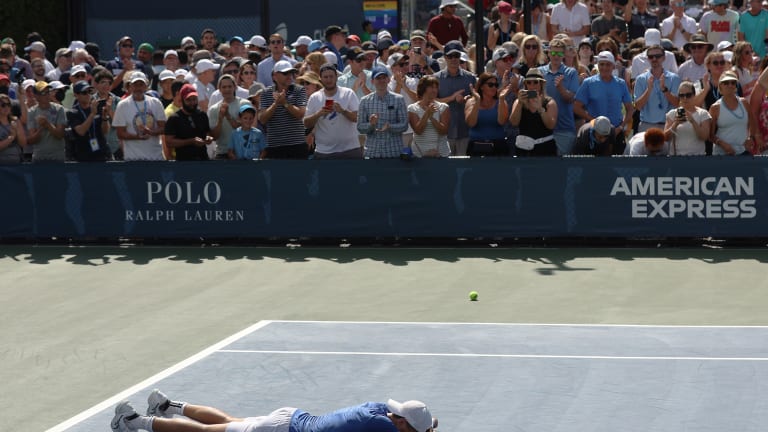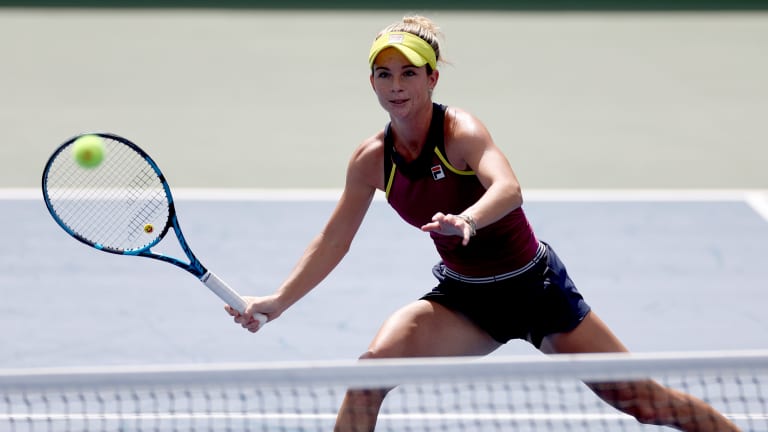US Open
Scenes from Queens, Day 3: Drama abounds as Keys rallies late, Cachin halts Holt and Riske edges Osorio; first looks at Mandlik and Stearns
By Aug 31, 2022US Open
US Open revamps mixed doubles format, adds $1 million prize to incentivize "biggest names in the sport"
By Feb 11, 2025US Open
US Open adds a 15th day, moves to Sunday start in 2025
By Jan 29, 2025US Open
Post-2024 US Open WTA storylines: The Age of Aryna; what's next for Swiatek and Gauff?
By Sep 09, 2024US Open
Post-2024 US Open ATP storylines: The race between Alcaraz and Sinner for No. 1 ... and more
By Sep 09, 2024US Open
Jannik Sinner’s US Open title run won’t clear the air around him entirely
By Sep 09, 2024US Open
Taylor Fritz fails in US Open final, but hope springs for American men's tennis
By Sep 09, 2024US Open
Jannik Sinner storms to second major title, defeats Swift, Kelce-backed Taylor Fritz at US Open
By Sep 08, 2024US Open
Jessica Pegula's willingness to take chances paid off at the US Open
By Sep 08, 2024US Open
Aryna Sabalenka won her first US Open by learning from her past heartbreaks in New York
By Sep 08, 2024Scenes from Queens, Day 3: Drama abounds as Keys rallies late, Cachin halts Holt and Riske edges Osorio; first looks at Mandlik and Stearns
Our running, on-the-grounds recap of the US Open.
Published Aug 31, 2022
Advertising

Keys closed out an impressive comeback, 6-4, 5-7, 7-6 (10-6) over Giorgi on Armstrong.
© Getty Images
Advertising

Pictured here before the tournament, Auger-Aliassime was one of the players who drew a crowd–in the bleachers and in the tunnel—on the practice courts.
© Getty Images
Advertising
Advertising
Advertising

Riske-Amritraj needed five match points to survive 2019 junior champion Camila Osorio on a full Court 17.
© Getty Images
Advertising

Court 12 was "impassible," according to one observer, for this second-rounder. The fans got what they came for, and more.
© Getty Images
Advertising

Pedro Cachin celebrates an extremely hard-fought win.
© Getty Images
Advertising
Advertising

Mandlik was ranked No. 489 at the start of the year.
© 2022 Getty Images